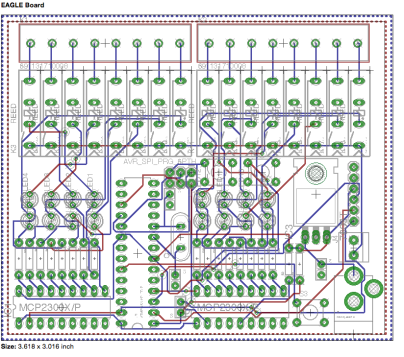Two years ago I started on my irrigation system, it became one of the driving factors to get me back into electronics.
I touched on it a little in a previous post, but as a software developer, I had always wanted to control physical things with software but never was really too interested in toy robots, etc. I thought that the irrigation system would be a great project because basically it’s just flipping a switch on and off on a timer.
I had a Raspberry Pi, so I did some research on how to use the GPIO’s and started figuring out what I needed to do to turn the sprinkler’s on and off. It turns out that it is pretty trivial to turn on a GPIO connected to a relay to close the 24VAC circuit turning on the sprinkler. Too trivial. It did not satisfy my desire to “learn electronics”, I didn’t feel like I got anything out of the experience that I wouldn’t have gotten for example from trying to install a kernel module to get sound working on the Pi.
I did end up learning a few things with that first iteration though. I had the original Raspberry Pi which had limited GPIO pins so I had to figure out how to add pins to control more zones, which lead me to the MCP23008 and since they need 5V and the Raspberry Pi runs at 3.3V I had another problem to solve which lead me to darlington arrays and then I was starting to get somewhere.
So, there is no real reason why I couldn’t use the Raspberry Pi to control the sprinklers directly, but where’s the fun in that? I decided I needed to get “closer to the metal” which means embedded software, which for version one means Arduino.

The above board should work, I think. It should allow you to put an ATMEGA328P in the socket, programmed already or through the ICSP pins that I cleverly added. I’m never going to get it manufactured though, turns out that even with the limits on the free version of EAGLE you can create a board that is really expensive to get manufactured (at least in North America). If I’m going to design a usable board that is worth getting manufactured, I’m going to need to start looking at surface mount components and improve my soldering skills. I guess there’s a reason why they make these boards double-sided.